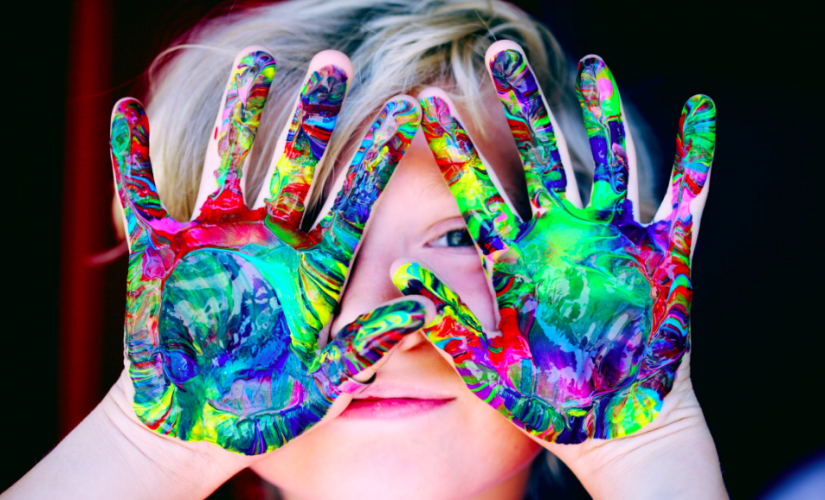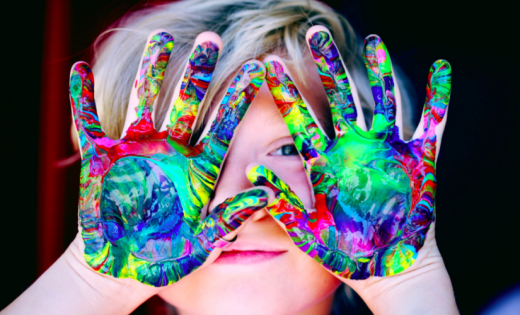Can You Learn to Be Creative at Work?
Can You Learn to Be Creative at Work?

Think about the most successful people in your office. Who always has the best ideas? Who knows just how to navigate difficult conversations? What do those people have in common?
Chances are good that the best and brightest workers at your company are also the most creative ones. Contrary to popular belief, though, most creative people aren’t born that way. Creativity is a skill just like any other, which means even the least creative person can learn to see the world in a new light.
Ambitious professionals should be more concerned about creative growth than most. Creativity is a vital component of professional success. People who expand their horizons climb the ladder, while those who fail to grow also fail to achieve or innovate.
Whether you earned a degree in art or struggle with stick figures, you can learn to be a more creative person by adopting a few new habits:
1. Establish a creative process.
Productive creatives know that great works of art don’t appear out of thin air. By following a creative process, they plan, produce, and improve their work until it’s ready to be shown the world. While you might assume that everyone’s process is unique, one of the season’s best books on creativity claims otherwise.
While writing “The Creative Curve,” big data entrepreneur Allen Gannett discovered that essentially every creative process shares four stages: consumption, imitation, community, and iteration. Through interviews with creators ranging from Ben & Jerry’s co-founder Jerry Greenfield to musician D. A. Wallach, Gannett shows that close adherence to that process, not “genius,” is critical for creative success.
2. Get away from the everyday.
When you stare at the same desk five days a week, you don’t have a lot of creative inspiration available. Take a vacation to break up the routine of work and provide your mind with the fresh canvas it deserves. That doesn’t mean answering emails from a beach instead of a cubicle — it means unplugging from the office entirely.
Sadly, 41 percent of Americans check in with work while away. You can’t experience new things if you never truly leave the old ones. Leave your laptop at home, and detach your company email from your smartphone. Even if you only take a long weekend, the time you spend away from work will do wonders for your creative health.
3. Externalize your internal thoughts.
Ever come up with a brilliant idea and forget it five minutes later? Human brains are incredibly powerful tools, but they can’t do it alone. Buy a journal or a sketchbook, then keep it on hand to jot down thoughts as they come up.
Journaling helps unlock the creative thoughts that exist just outside your conscious perception. The more you write, the more you’ll find in your head than you realized. Don’t replace old-school pen and paper with a tablet or keyboard, though. Research shows that people who physically write down notes get more from the practice than those who type.
4. Learn something that has nothing to do with work.
Sometimes, the way to get better at work is to learn something with no practical application at the office. Take a class in something completely unrelated to your field to get your creative juices flowing. Just like reading books, taking classes taught by experts is a shortcut to knowledge you couldn’t acquire on your own.
You could take a class on creativity, but your options aren’t limited to creative fields. Rather than set out with a specific professional goal, pick an unfamiliar area that interests you and dive in. Masterclass, for instance, lets students learn cooking from Gordon Ramsay or tennis from Serena Williams. What you learn is less important than the act of learning itself.
5. Break the digital chains.
From the desktop PC to the smartphone at home, glowing rectangles rule modern life. Combined research from a variety of sources concludes that the average person today spends more than four hours per day on a smartphone. Add work to the mix, and total screen time skyrockets.
Screens aren’t all bad, but the world has more to offer than a digital alternative. Be conscious about when and why you use digital devices. If you find yourself whipping out your phone during every break, use that time to take a walk around the office, grab some water, or chat with a colleague. The more diverse experiences you provide your brain, the more intellectual energy you’ll have when you need it.
6. Schedule creativity on your calendar.
These tips can all make you a more creative person, but if you don’t make time to practice them, you won’t see the benefits. Put creativity on your calendar to establish your new habits.
When your schedule is tight, incorporate creative time in other activities. Bring your journal to lunch and write about your day so far, your plans, or whatever comes to mind. Schedule vacations and breaks ahead of time so you can relax without worrying about work. At home, set aside 30 minutes a night (or whatever works for you) to read a new book or take the next lesson in your class. Following a routine might not sound very creative, but by doing so, you set the foundations for a new mindset.
The more you invest in your creative development, the more you’ll find yourself contributing new ideas and discovering better solutions at work. Before long, people will start to tell you how lucky you are to have a naturally creative mind.
The post Can You Learn to Be Creative at Work? appeared first on ReadWrite.
(35)


